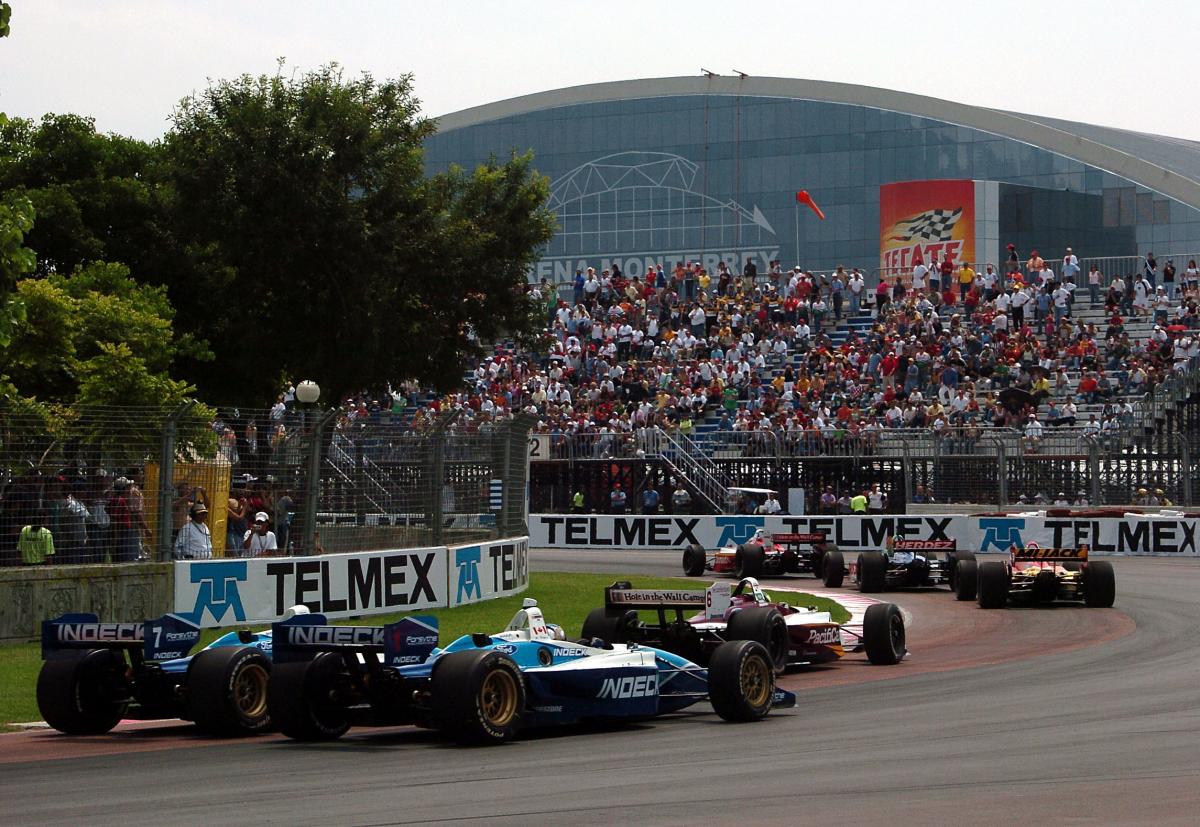The warning signs have been there for some time, but the Thermal $1 million Challenge finally confirmed what we had all been dreading. The direction of the series is mismanaged, out of touch, and sliding towards disaster.

From hundreds of thousands of dollars of damage, via minimal action, to a format so farcical that the series’ most exciting driver was 53 seconds off the lead by lap 7 of the final, the Thermal $1 million Challenge did not quite go as Indycar would have hoped.
On Friday, Rinus VeeKay told the media that the exhibition race presented an opportunity with ‘a lot to win, and nothing to lose’. By Sunday afternoon, his weekend was over in a flash, falling victim to a multi-car incident at the opening corner of the race. His $23,000 cheque may only cover a tiny part of the damage bill left at the door of his Ed Carpenter Racing team.
As an Indycar fan, the $1 Million dollar challenge felt like a slap in the face. The core of the most competitive racing series in the world, built on fan accessibility, wheel to wheel action and unassuming events, felt like it had been ripped out and replaced with a pretentious and exclusive atmosphere native to modern day Formula 1.
Over the winter, Indycar endured a difficult period where it felt like a daily negative update about the future of the series was always imminent. Problems with the delayed hybrid engine package leading to a primary engine manufacturer threatening to pull out of the sport, the most exciting race in 2023’s circuit unceremoniously dropping off the calendar, a botched video game, a fly on the wall documentary hidden from vast swathes of potential audience, a car that hails from 2012 and murmurs of guaranteed spots in the Indianapolis 500 meant that Indycar fans were genuinely contemplating whether the long-term future of the sport was secure.

Since Roger Penske assumed control of the Indianapolis Motor Speedway and the series itself, the sport was financially able to survive a global pandemic, the facilities at IMS have been greatly improved, ticket sales for the Indianapolis 500 are on the rise and television ratings have remained steady.
And yet there is a constant feeling that this mismanagement is a couple of wrongdoings away from killing the most historic racing championship in the world.
On January 15th the UK ‘Bricks across the Pond’ radio show broadcast an hour long episode about Indycar being in crisis. The following week, the show presented a path for Indycar to become a global brand. With Formula 1’s popularity sliding after a wave of new fans from Netflix’s drive to survive realised that the processional snooze fests it consistently produces are not worth watching, Indycar should have been front and centre, hoovering up new fans by promoting its competitive nature, cheap ticket prices, accessible drivers and joyful atmosphere.

Instead, the series seems fixed on incremental growth, rather than attempting to find its feet on the global stage. There seems to be no desire from Roger Penske and co to bring Indycar to Mexico, despite the sport’s most popular driver hailing from Monterrey, a city which has hosted the series in the past.
Juncos Hollinger racing is an Argentinian racing team, with a driver so popular he won Argentinian sports personality of the year in 2018. Augustin Canapino is a 14 time touring car champion, and tens of thousands of fans flocked into the Circuit Ricardo Tormo at the end of 2022 to watch their hero run a few demonstration laps in an Indycar.
In Europe, the market is also consistently growing – the champion, Alex Palou, hails from Barcelona. Romain Grosjean and Marcus Ericsson have both ventured to the USA to ply their trade, and Rinus VeeKay is a young Dutch driver with the perfect mix of steely fortitude and cheeky persona. With F1 moving away from Barcelona in 2026, why not use this as an opportunity to strike – cheap tickets whilst promoting the race to the hilt by hailing it as a champion’s return to his home city.
And yet, the best they could come up with was a country club in California. Few fans, exclusive access and more mentions of the wonderful tennis courts and noble sacrifice of the Thermal Club members to allow the series to race in their backyard than there were on track overtakes throughout the farcical race format.

It was the exact opposite to the wonderful aspects of Indycar that could so easily have been built upon. If it wasn’t for Colton Herta and Alexander Rossi powering through the field in the second half of the final, there would have been nothing to even bother mentioning in the race report. The series’ most exciting driver spent the first half of the final cruising around saving tyres, and was at some points twelve seconds a lap slower than his competitors. Colton Herta was 53 seconds off the pace by lap 7.
Professionals Leigh Diffey and James Hinchcliffe spent significant amounts of time hailing how amazing the event was, before having to virtually apologise on air for the embarrassment that was the first half of the final. The eyes of the world watching the most competitive racing series in the world race around a sponsorless racetrack bereft of any atmosphere, in an attempt to promote their series.
Marshall Pruett reported that he had heard from a series official that there was some rumblings about investment in the series from members of the club. If there is genuine sponsorship and ownership opportunities born out of this Thermal Club experiment, then the challenge will have served its purpose. However, for now, Indycar can be praised for attempting something different, even if it was terribly out of touch with what fans want.
How anyone thought that this would be a success is beyond all fans – when Indycar removed their license with the hyper-popular iRacing and signed with a failing Motorsport Games, fans thought the same thing; when the hybrid system was delayed and Honda threatened to pull out, fans thought the same thing; when the series began 2024 with a chassis built in 2012, fans thought the same thing; and when the series signed a contract with the CW for their fly on the wall documentary, fans thought the same thing.

Amazingly, the sport somehow continues to limp on, producing good racing and interesting storylines. However, when an average race in St. Pete is compounded by a race in California deeply out of touch with reality, it’s difficult to see where the positives are coming from in the current series.
“But when you don’t evolve and when you don’t change, you sure as hell will not grow…Maybe that’s a bit aggressive… But we have the potential to be like two or three [times], not growing 5 or 10 percent a year. We’re selling ourselves short by just wanting to grow incrementally like that. Like I think we really have the potential to see massive gains, but just like in a lot of things, you obviously have to fuel it if you want to see some of that double, triple, quadruple.”
Closing with the words of Pato O’Ward, there is so much potential for Indycar to turn into a household name, but it requires smart investment, an openness with fans to deliver on promises and imaginative thinking, not racing around a country club in a farcical format as a stop gap because TMS dropped off the calendar.
Indycar can do better. The time is now, the potential is visible. We have a history of shooting ourselves in the foot, so this time, why not aim at the target, and go for it with all guns blazing.

